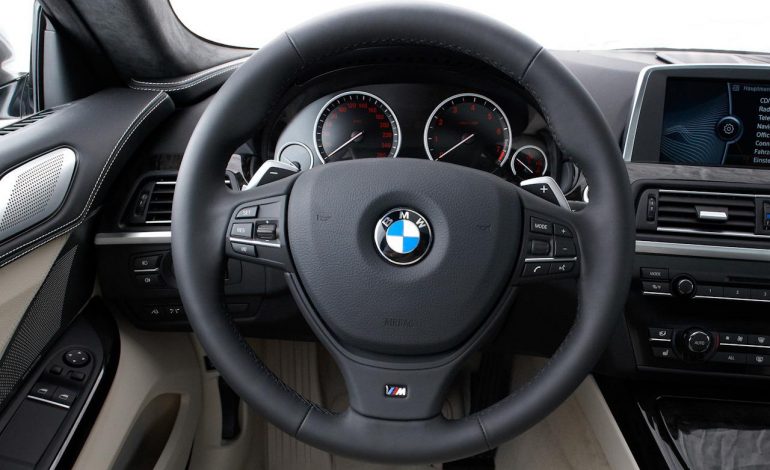At some point in just about every car’s life, parts will start to wear and you will feel a vibration in your steering wheel. Most of the time the vibration is small and then gets more and more pronounced until it becomes a genuine shake. When it gets to that point, it’s probably becoming unsafe and you should see a mechanic to look at the issue. That being said, knowing what things can cause steering wheel vibration will allow you to better informed about the situation and hopefully understand what your mechanic is talking about. Here are five culprits that might be involved:
1) Brakes – Do steering wheel vibrations appear when you step on the brakes? If so, there’s a strong possibility that your car has a warped brake rotor, or rotors. Rotors are those shiny disc-shaped components that you can see through your wheel rims. They can get bent out of shape due to heavy wear and tear. Instead of being uniformly flat all the way across, a deformed rotor is uneven and the calipers and brake pads can’t get a balanced grip and hence vibrate. Often quite violently.
2) Tires –Tires are perhaps the number one source of steering wheel vibration. The main issue is simply that tires often wear unevenly and when they turn, they can shake and wobble in very unsubtle ways. What do you do? First, a good garage can balance your tires to eliminate vibration and this often takes care of the problem. In many cases, however, it’s probably just time for new set of tires.
3) Front Wheel Bearings – The front wheel bearings on cars and trucks are what holds the tire on the hub and can wear over time and become loose. When this happens you can feel it in the steering wheel and it often makes a nasty grinding sound when driving, usually when turning around corners. You generally don’t want to mess with worn wheel bearings, time to check in with your local mechanic when this occurs.
4) Axles – The axles on a front wheel drive car connect the transmission to the wheel hubs and they have flexible joints in them. These joints are generally called Constant Velocity Joints (CV Joints) and they wear out over time. One of the main reasons they can wear prematurely is that CV joints are usually covered by accordion-like boots that seal out junk like road salt and sand. The problem is that boots often tear open when they get old and the CV joint, now operating with lots of gritty stuff inside, will soon fail. When this happens, you can actually hear it “crunching” when turning corners and usually feel it in the steering wheel.
5) Tie-rod ends and ball joints – These are the mechanical parts in the front-end that move around when you steer and your car absorbs road bumps. And because they are moving parts, they wear out. At driving speeds, this can translate to annoying vibrations that are often felt in the steering wheel. Sometimes it just feels like your steering wheel is loose and sloppy. Fortunately these worn out parts are easy to spot by a good mechanic and aren’t difficult to repair.
So, there’s five reasons that steering wheels can vibrate when you drive. Note that these five reasons aren’t the only possible reasons that you feel something awry when you drive. When in doubt, it’s always a good idea to see a good mechanic if you have this going on.
Source: HOLT FIAT

